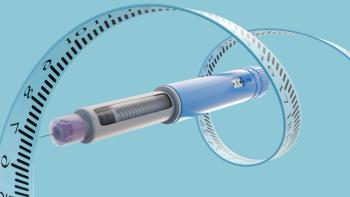
ISMP Releases New Best Practices
The report enables hospital and health systems to focus their medication safety efforts over the next 2 years on these best practices.
The Institute for Safe Medication Practices (ISMP) has released its 2020-2021 Targeted Medication Safety Best Practices for Hospitals. The goal of the report is to identify, inspire, and mobilize widespread, national adoption of consensus-based best practices for specific medication safety issues that can cause fatal and harmful errors in patients.
The report enables hospitals and health systems to focus their medication safety efforts over the next 2 years best practices that are designed to be adaptable and easily implemented. The updated list includes new methods on opioid prescribing, and on risks related to the ‘override’ feature with automated dispensing cabinets (ADCs).
In addition, 6 best practices were revised or incorporated into other items. One prior best practice, eliminating glacial acetic acid, was archived because hospitals have shown progress in removing or replacing the substance with vinegar or commercially-available diluted acetic acid 0.25% to prevent accidental administration.
Michael Gaunt, PharmD, medication safety analyst for ISMP, explained that best practices were developed to inspire widespread national action to address recurring problems that cause harmful errors.
“They are highly effective, and realistic strategies whose implementation can vastly improve medication safety, and reduce the risk harmful and fatal medication errors. Although the best practices are targeted for the hospital setting, some are applicable to other areas of health care,” Gaunt said in an interview with Pharmacy Times.
Two best practices have been added for 2020-2021: Opioid Best Practice, and Automated Dispensing Cabinets Best Practice.
Opioid Best Practice
- Verify and document a patient’s opioid status (naïve versus tolerant) and type of pain (acute versus chronic) before prescribing and dispensing extended-release and long-acting opioids.
- Verify that a patient is opioid tolerant with chronic pain before dispensing high-dose opioids indicated only for breakthrough pain in opioid tolerant patients.
- Default order entry systems to the lowest initial starting dose and frequency when initiating orders for opioids.
- Alert practitioners when opioid dose adjustments are required due to age, renal, or liver impairment, or when patients are prescribed other sedating medications.
- Eliminate the prescribing of fentanyl patches for opioid naïve-patients and/or patients with acute pain.
- Eliminate the storage of fentanyl patches in automated dispensing cabinets or as unit stock in clinical locations where acute pain is primarily treated.
Automated Dispensing Cabinets Best Practice
- Limit the variety of medications that can be removed from an automated dispensing cabinet (ADC) using the override function.
- Require a medication order prior to removing any medication from an ADC, including those removed using the override function.
- Periodically review for appropriateness the list of medications available using the override function.
- Restrict medications available using override to those that would be needed emergently, such as antidotes, rescue, and reversal agents; life-sustaining drugs, and comfort measure medications including those used to manage acute pain or intractable nausea and vomiting.
ISMP began issuing Targeted Medication Safety Best Practices in 2014. The consensus-based recommendations are based on error reports received through the ISMP National Medication Errors Reporting Program (ISMP MERP). They are reviewed by an external expert advisory panel, and approved by the ISMP Board of Trustees.
RELATED ARTICLES
- Drug Name Confusion With Methotrexate Can Cause Fatal Errors
- ISMP Urges National Regulation of Medical Marijuana Labeling
REFERENCE
- ISMP Targeted Medication Safety Best Practices for Hospitals. ISMP website. February 21, 2020. https://www.ismp.org/guidelines/best-practices-hospitals. Accessed February 25, 2020.
- 2020-2021 Targeted Medication Safety Best Practices for Hospitals. ISMP website. https://www.ismp.org/sites/default/files/attachments/2020-02/2020-2021%20TMSBP-%20FINAL.pdf. Accessed February 25, 2020.
Newsletter
Stay informed on drug updates, treatment guidelines, and pharmacy practice trends—subscribe to Pharmacy Times for weekly clinical insights.

















































































































































































































